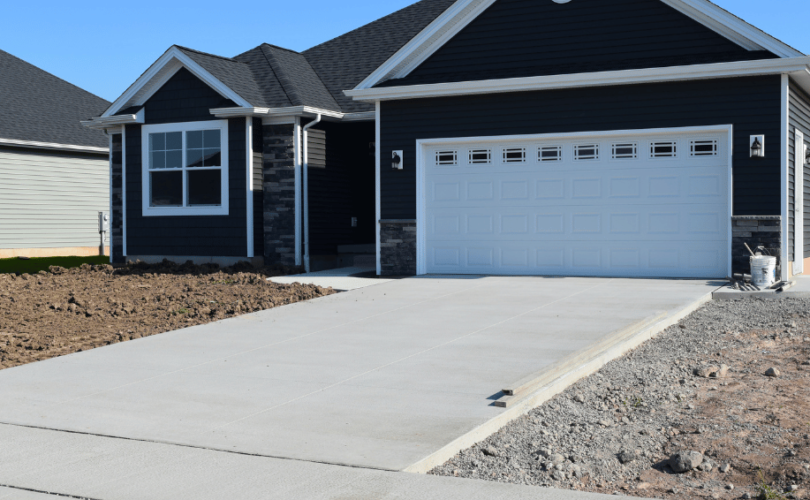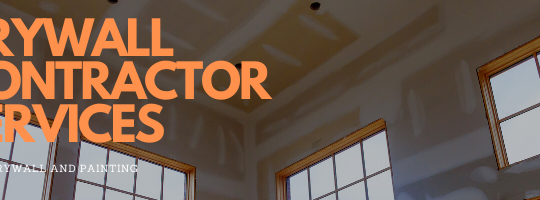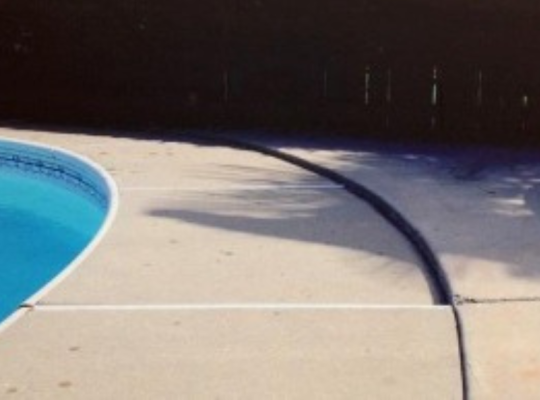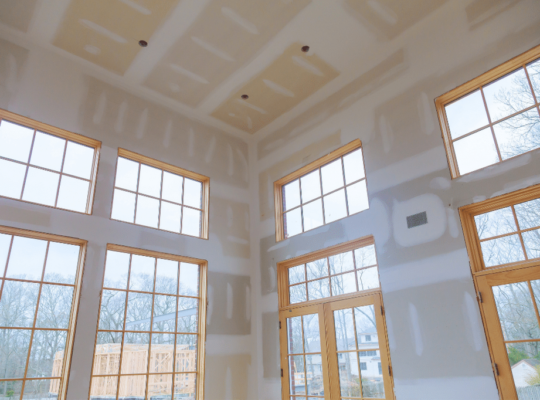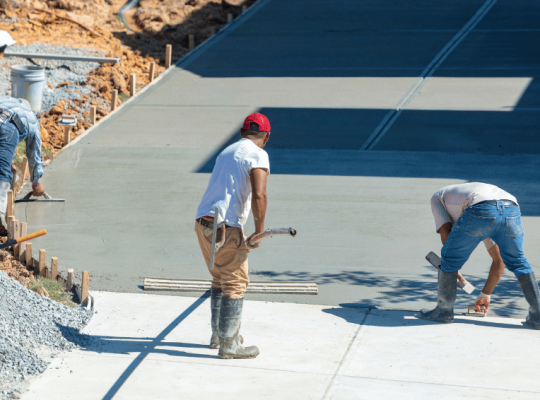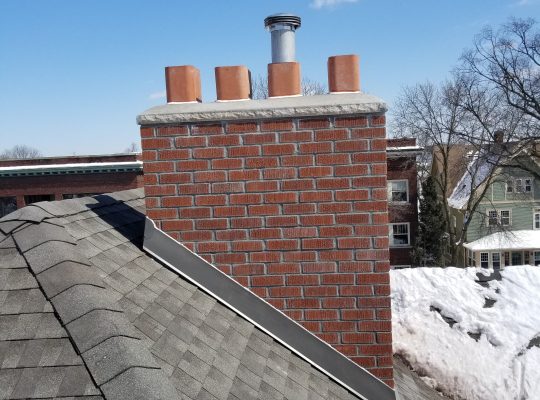Why Choose These Concrete Reinforcement Techniques?
Choosing optimal concrete reinforcement techniques is paramount for achieving enhanced structural integrity, longevity, and cost-efficiency in construction projects. Techniques such as rebar improve tensile strength and help distribute loads effectively, while fiber reinforcements boost crack resistance and structural toughness. Polymer materials, including polymer fibers, contribute to durability by offering resistance to environmental and chemical degradation. These improvements not only support significant durability and safety benefits but also present economic advantages through reduced maintenance costs and extended service life of the structures. A deeper exploration into each method will unveil further insights into their strategic applications and benefits.
Understanding Rebar Benefits
Reinforcing bars, commonly known as rebar, significantly enhance the tensile strength and durability of concrete structures. Integrated within the matrix of concrete, rebar absorbs and distributes the tensile loads that concrete alone cannot bear. This synergy prevents structural failures, particularly in environments subjected to dynamic loads or stress variations.
Rebar is typically made from carbon steel, with ridges for better mechanical anchoring into the concrete. This adherence is critical in maintaining the integrity of the composite structure under stress. The design and placement of rebar follow precise engineering principles, ensuring that every element of a concrete structure contributes to its overall stability and performance.
Through a process known as passive corrosion protection, concrete encases rebar, isolating it from environmental factors that could induce corrosion. The alkaline environment of concrete further acts as a barrier against corrosion, prolonging the lifespan of the rebar and, by extension, the concrete structure itself.
The specification of rebar involves crucial considerations of diameter, tensile strength, and spacing, which are meticulously calculated based on the anticipated loads and environmental conditions. This tailored approach allows for the optimization of structural resilience and resource efficiency, fostering a sense of security and trust among stakeholders invested in sustainable construction initiatives.
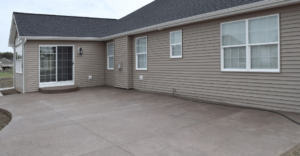
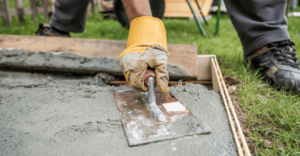
Advantages of Fiber Reinforcements
Fiber reinforcements, incorporated into concrete, offer significant improvements in crack resistance and load distribution, enhancing structural durability and toughness. These fibers, ranging from synthetic materials like polypropylene to natural fibers and steel, are mixed with concrete to form a composite material that exhibits enhanced mechanical properties. The primary advantage of using fiber reinforcements is their ability to control the propagation of microcracks at early stages of loading, which traditionally are a precursor to larger structural failures.
This homogenous distribution of fibers throughout the concrete matrix provides an isotropic enhancement in strength and toughness, which is not always achievable with traditional rebar. The following table illustrates the comparative advantages of fiber reinforcements over conventional methods:
| Property | Fiber-Reinforced Concrete | Traditional Concrete |
|---|---|---|
| Crack Resistance | High | Moderate |
| Load Distribution | Uniform | Concentrated |
| Durability | Enhanced | Standard |
The inclusion of fibers also contributes to the reduction in construction time and labor costs, as it simplifies the installation process compared to the positioning and tying of rebar. Moreover, fiber reinforcements offer an increased resistance to environmental factors such as corrosion and freeze-thaw cycles, making them superior for challenging climates. This technical synergy not only fortifies the structure but also fosters a sense of reliability and safety within the engineering community.
The Role of Polymer Materials
Polymer materials play a pivotal role in enhancing the durability of concrete structures, providing significant resistance against environmental stressors and chemical degradation. A comprehensive cost-efficiency analysis reveals that incorporating polymers can lead to substantial long-term savings by reducing maintenance and replacement frequencies. Furthermore, the versatility of polymer applications in concrete reinforcement allows for innovative uses in varied construction scenarios, adapting to specific structural demands and environmental conditions.
Polymer Durability Enhancement
Enhancing the durability of concrete through the integration of polymer materials significantly improves its resistance to environmental stresses and mechanical degradation. Polymers, such as polypropylene and epoxy resins, contribute to the concrete matrix by reducing permeability and enhancing tensile strength. This improvement is primarily due to the polymers’ ability to form a cohesive interfacial bond with the cementitious components of concrete. Research indicates that the inclusion of polymer fibers can mitigate the formation of microcracks under load, thereby extending the structural lifespan of concrete infrastructures. Additionally, polymers are resistant to chemicals and water ingress, which are critical factors in preventing corrosion and freeze-thaw cycles in reinforced concrete. Thus, polymer-enhanced concrete stands as a robust solution in harsh environmental conditions.
Cost-Efficiency Analysis
Incorporating polymer materials into concrete presents a nuanced balance between initial costs and long-term savings, warranting a thorough cost-efficiency analysis. From the outset, polymers tend to increase material expenditures due to their higher price compared to traditional reinforcement materials like steel. However, the investment in polymer materials is offset by their maintenance advantages. Polymers are inherently resistant to corrosive agents, which significantly reduces the need for costly repairs and prolongs the lifespan of concrete structures. This durability translates into a decrease in lifecycle costs, making polymers an economically viable option over time. A detailed economic assessment should therefore consider both the upfront cost and the projected reductions in maintenance expenses to accurately evaluate the financial viability of polymer-reinforced concrete.
Application Versatility Benefits
Expanding the utility of concrete in diverse construction applications, polymer materials offer remarkable versatility. Their integration into concrete reinforcement is pivotal, enhancing both performance and adaptability. This technical innovation facilitates application in various environments, which is critical for modern construction demands. Here are key aspects where polymer materials excel:
- Enhanced Durability: Polymers significantly improve concrete’s resistance to environmental stressors, increasing lifespan.
- Reduced Weight: Lighter than traditional materials, polymers ease the handling and transportation of reinforced concrete.
- Flexibility in Design: Offers more design options due to its malleability and adaptability.
- Improved Sustainability: Polymers often contribute to greener building practices by reducing carbon footprint and enhancing energy efficiency.
These benefits ensure that every member of the construction community can rely on enhanced, sustainable materials.
Comparing Costs and Benefits
Evaluating the economic impact and potential return on investment is critical when selecting the most effective concrete reinforcement techniques. Each method, from traditional rebar to innovative fiber reinforcements, carries distinct cost implications and benefits which must be thoroughly analyzed to ensure optimal allocation of resources.
The initial cost of materials is a primary consideration. Steel rebar, while robust, often presents higher upfront costs compared to synthetic or natural fiber alternatives. However, the durability and longevity provided by steel can translate to lower lifecycle costs through reduced maintenance and fewer repairs. Conversely, fiber reinforcements, though initially more affordable, may require more frequent replacements depending on the environmental conditions and load requirements, potentially escalating long-term expenditures.
Labor costs also play a significant role in the financial evaluation. Techniques such as post-tensioning, which require specialized skills, can increase initial labor costs but result in structures that are more resistant to cracking, thus diminishing future repair costs. Additionally, the ease or complexity of installation associated with each technique directly affects the speed of construction and thus impacts the overall project timeline and cost.
Enhancing Structural Safety
Enhancing structural safety in concrete reinforcement involves critical techniques aimed at addressing various mechanical and environmental challenges. Improvements in earthquake resistance focus on integrating materials and designs that absorb and dissipate seismic energy, thereby minimizing structural damage during seismic events. Additionally, advancements in load bearing capabilities and the extension of longevity and durability of concrete structures are achieved through the incorporation of high-performance concrete and innovative reinforcement technologies.
Earthquake Resistance Improvement
To improve earthquake resistance, modern concrete reinforcement methods are increasingly incorporating advanced materials and technologies that enhance structural safety and durability. These innovations are pivotal in safeguarding structures in seismic zones, ensuring they remain functional and safe during and after seismic events. Here are key techniques currently employed:
- Fiber-Reinforced Polymers (FRPs) – These materials provide high strength-to-weight ratios and excellent fatigue resistance, essential for absorbing seismic energies.
- Shape Memory Alloys (SMAs) – Alloys that can return to their original shape after deformation, helping maintain structural integrity.
- Seismic Dampers – Devices that absorb and dissipate energy, reducing the amplitude of vibrations.
- Base Isolation Systems – Techniques that decouple the building from ground motion, significantly lowering earthquake forces transmitted through the structure.
These methodologies form the backbone of modern seismic engineering, aiming to preserve community and structural resilience.
Load Bearing Enhancement
Load bearing enhancement in concrete structures involves the strategic use of materials and design principles to increase the ability of a building to support additional weight and stress. This facet of structural engineering considers the integration of reinforced concrete elements and advanced composites to fortify the load-carrying capacity. Such enhancements not only distribute loads more efficiently but also elevate the structural integrity under variable conditions.
| Technique | Material Used | Benefit |
|---|---|---|
| Fiber Reinforcement | Carbon Fiber | Increases tensile strength |
| Shear Reinforcement | Steel Bars | Enhances shear resistance |
| Post-Tensioning | Steel Cables | Optimizes load distribution |
Adopting these methodologies ensures that community structures can safely meet growing demands, fostering a sense of security and long-term sustainability among residents and stakeholders.
Longevity and Durability Increase
Building upon the foundational strategies for load bearing, increasing the longevity and durability of concrete structures further advances their structural safety. This approach not only ensures the sustainability of the construction but also significantly reduces maintenance costs over time. Here are key techniques:
- Use of High-Performance Concrete (HPC): Designed for exceptional strength and durability, HPC resists environmental stresses and chemical attacks.
- Proper Curing Practices: Adequate curing enhances the hydration process, crucial for achieving designed strength and minimizing porosity.
- Incorporation of Fibers: Adding steel or synthetic fibers to concrete mixtures improves tensile strength and controls cracking.
- Application of Protective Coatings: Coatings such as sealers and membranes protect concrete from moisture ingress and chemical corrosion.
Adopting these methods fosters a sense of assurance and community among stakeholders, emphasizing a commitment to lasting structural integrity.
Extending Lifespan of Constructions
Enhancing the durability of concrete structures significantly contributes to their extended lifespan and sustainability. The integration of advanced reinforcement techniques plays a pivotal role in achieving this enhancement. For instance, the use of high-performance reinforcing steels, which exhibit superior strength and corrosion resistance compared to traditional materials, markedly extends the service life of concrete infrastructures. This is critical in environments exposed to corrosive agents such as chlorides in marine atmospheres.
Further, the application of fiber-reinforced polymers (FRPs), characterized by their high tensile strength and resistance to environmental degradation, provides an effective alternative to conventional steel reinforcements. By substituting steel with FRPs, the susceptibility to corrosion is minimized, thereby reducing maintenance requirements and prolonging structural integrity. The adoption of these materials aligns with a community’s need for long-lasting buildings and infrastructures, fostering a sense of long-term security and communal pride.
Moreover, the implementation of supplementary cementitious materials like fly ash or slag in concrete mixtures not only enhances the concrete’s mechanical properties but also improves its durability against chemical attacks. This technique not only bolsters the structure’s resilience but also contributes to sustainability by utilizing industrial by-products, thereby resonating with environmentally conscious community values.
Global Trends in Concrete Reinforcement
Around the globe, innovative concrete reinforcement strategies are being adopted to meet the evolving demands of modern construction and environmental sustainability. This shift is driven by the need to enhance durability, reduce environmental impact, and adapt to new architectural challenges. As we delve deeper into specific global trends, we observe several key developments:
- High-Performance Concrete (HPC): Utilization of HPC is increasing due to its superior strength and durability properties. This material accommodates higher stress and has a prolonged lifecycle, significantly reducing maintenance needs and costs.
- Fiber Reinforced Concrete (FRC): Incorporation of fibers, whether steel, glass, or synthetic, into concrete enhances its crack resistance and tensile strength. This not only extends the structure’s lifespan but also allows for more innovative designs due to improved material flexibility.
- Use of Recycled Materials: Globally, the trend of using recycled materials like crushed glass and reclaimed aggregates in concrete reinforcement is gaining traction. This practice supports sustainability and reduces the construction industry’s carbon footprint.
- Advancements in Additive Manufacturing: 3D printing of concrete is revolutionizing the way structures are built, offering precise reinforcement placement and reduced waste.
These technological advancements underline a collective global effort to foster resilient infrastructural growth while preserving our environment. As industry professionals, embracing these trends not only enhances our project outcomes but also strengthens our commitment to sustainable development.
Frequently Asked Questions
Can DIY Enthusiasts Safely Implement These Techniques at Home?
DIY enthusiasts can safely implement concrete reinforcement techniques at home by carefully following detailed guides and adhering to safety protocols. Proper equipment and understanding of materials are crucial for successful and secure application.
What Are the Environmental Impacts of These Reinforcement Techniques?
The environmental impacts of concrete reinforcement techniques include increased carbon footprint due to production processes and potential waste generation. However, longevity and durability enhancements may offset these impacts by reducing the frequency of repairs and replacements.
How Do Weather Conditions Affect the Choice of Reinforcement?
Weather conditions significantly influence the selection of concrete reinforcement techniques. Factors such as temperature, humidity, and precipitation affect material performance and durability, necessitating tailored solutions to ensure structural integrity and longevity in varying climates.
Are There Any Innovative Tools Required for These Techniques?
Innovative tools required for modern concrete reinforcement include fiber laser cutters, rebar tying machines, and advanced software for structural analysis, enhancing precision, efficiency, and safety in construction practices.
What Training Is Needed to Specialize in These Methods?
Specializing in advanced concrete reinforcement methods requires training in specific techniques, understanding materials science, and mastering safety protocols. Continuous professional development and certifications may also be necessary to stay updated with industry standards and innovations.
